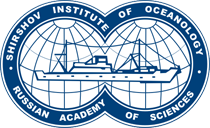This year, employees of Zenkovich Laboratory of the Sea Shelf and Coasts completed instrumental monitoring of the accumulative relief of the coastal zone in the Baltic Spit section, where 11 series of measurements have been carried out since 2019. Each series included an area survey of the relief of the coastal land and the underwater coastal slope from a small vessel over an area of ⁓700 m along the coast. The purpose of the measurements was to study the dynamics of a sandy shore with an underwater bank on a scale of several seasons.
Based on the results of the work, a stable displacement of the underwater shaft towards the shore was revealed, starting from May 2019 and until September 2021, when the abutment of the shaft to the beach was recorded. Thus, the evolution has been traced between two limiting states of the coastal profile, known as the erosion profile, with an underwater swell, and the accumulation profile, when the swell displaced to the shore forms a terrace at the edge and the beach expands. In March 2022, after the storm season, the formation of a new underwater swell was recorded, and its parameters were almost completely consistent with the original swell observed in May 2019.
Field observations of the cyclic behavior of underwater bars are of undeniable value for coastal science. The movement of the shaft towards the shore while maintaining its shape can be considered an example of the quasi-equilibrium state of the coastal profile, where the underwater shaft is its key element. The measurements showed that this form of relief retains its parameters even after the most intense storm events and, due to the dissipation of wave energy over the seaward slope and the crest of the bar, determines the morphodynamics of the entire coastal profile.
The reason why the new generation of underwater shafts repeats the shape and position of the previously recorded shaft remains unclear. It can be assumed that the spatially stable formation of the ridge is associated with the presence on the coastal profile of a zone of maximum wave component of sediment transport, i.e. some constant determined by the wave regime of the coast and the slope of the bottom. The study of these features on a specific coastal area will allow solving a number of fundamental and practical problems affecting the evolution of accumulative shores and determining the outer boundary of the coastal zone based on morphodynamic characteristics.
Public results:
https://ocean.ru/en/index.php/novosti-instituta/1171-instrumental-monitoring-of-the-accumulative-relief-of-the-coastal-zone-in-the-baltic-spit-section#sigProIdcc3eeba294




